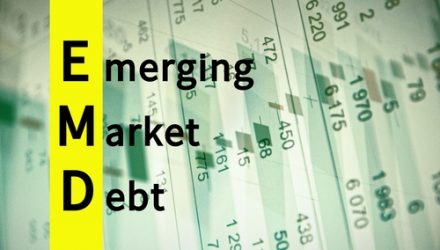While yields might be creeping higher in benchmark U.S. Treasuries, it might not be enough to satiate fixed income investors’ appetite. That said, it’s a good time to seek yield in other parts of the world, such as emerging markets (EM), via the Invesco Emerging Markets Sovereign Debt ETF (PCY).
PCY is based on the DBIQ Emerging Market USD Liquid Balanced Index. The Fund will normally invest at least 80% of its total assets in securities that comprise the Index (the “Index”).
The Index tracks the potential returns of a theoretical portfolio of liquid emerging markets US dollar-denominated government bonds issued by more than 20 emerging-market countries. The countries in the Index are selected annually pursuant to a proprietary index methodology, and the fund as well as the index are re-balanced and reconstituted quarterly.
Even though the pandemic may produce reticent investors in EM debt, it’s an opportune time nevertheless. As a MoneyWeek article put it, “many trillions of dollars worth of bonds currently offer a negative yield. Given these circumstances, it’s no surprise that investors have grown increasingly interested in emerging market (EM) debt. Yields from a variety of EM issuers at both the governmental and corporate level can be extremely attractive.”
“According to a recent study from Nicolas Rabener at research group FactorResearch, over the 12 months to July 2020, EM debt in its various guises (dollar government debt, local currency government debt and corporate bonds in dollars) yielded an average of between 4.4% and 4.7%,” the article added. “By contrast, US government bonds yielded just 1.7%, and US corporate bonds an average of 3.1%. Only US high-yield bonds (those deemed high risk) yielded more, on an average 5.4%.”
But investing in EM debt isn’t strictly about yields. EM investments add more diversification to their portfolios than U.S. government or even corporate debt.
“Beyond the attractive yields, dollar-denominated EM corporate debt has offered another useful feature,” the article went on to mention. “Intriguingly, the asset class has a relatively low correlation with developed-world – and specifically US – equities, except during global crises such as the Covid-19 outbreak. Thus, an investor with a diversified portfolio of both stocks and bonds may find that EM corporate debt adds a useful source of risk diversification.”
For more news and information, visit the Innovative ETFs Channel.









